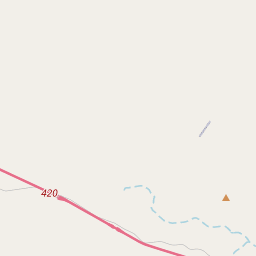Fort Terrett Headquarters
Historical marker location:
CR 307 off IH 10 via exit 429, Sonora, Texas
( From Sonora, take I-10 East about 30 miles to Exit 429 go under I-10 to FM 3130, go East on 3130 about 1 mile to CR 307, go down CR 307 about 1 mile to Ranch Headquarters *Private property*)
Marker installed: 1962
Marker size: Medallion Only







© OpenStreetMap contributors
About Texas State Historical Markers
As one of the most visible programs of the Texas Historical Commission (THC), historical markers commemorate diverse topics in Texas history, including: the history and architecture of houses, commercial and public buildings, religious congregations, and military sites; events that changed the course of local and state history; and individuals who have made lasting contributions to the state, community organizations, and businesses.
More history nearby
The state flower of Texas is the bluebonnet. The flower blooms in the spring and is a common sight along the highways and in fields throughout the state.
About Sutton County
Sutton County Timeline
Sutton County is located in southwest Texas and has a rich history dating back to the Native American tribes that inhabited the region for thousands of years. The first recorded European settlement in the area was established in the mid-1800s, when a group of pioneers led by Moses and Asa Sutton settled near the headwaters of the Llano River. The county was officially formed in 1887 and named after the Sutton family.
In the late 19th century, ranching became a significant economic activity in Sutton County, with large cattle ranches dominating the landscape. The area's abundant grasslands and access to water sources made it conducive to ranching, and it attracted many ranchers looking to establish their businesses. The arrival of the railroad in the early 1900s further stimulated growth and trade in the county.
In the early 20th century, silver mining also played a crucial role in Sutton County's history. The boom in silver production attracted miners from all over Texas and beyond. The town of Sonora, which had been established earlier as a cattle trading center, became a hub for silver mining operations. Although the silver boom was short-lived and ended by the 1920s, its impact on the economy and population of the area was significant.
Today, Sutton County continues to be primarily an agricultural area, with cattle ranching being the main industry. The county is known for its natural beauty, including the scenic canyons and rivers that provide opportunities for outdoor recreation. In recent years, there has been a growing interest in tourism, with visitors exploring the area's history and enjoying activities such as hunting, fishing, and hiking. Sutton County's history and vibrant present make it an intriguing part of Texas' diverse landscape.
In the late 19th century, ranching became a significant economic activity in Sutton County, with large cattle ranches dominating the landscape. The area's abundant grasslands and access to water sources made it conducive to ranching, and it attracted many ranchers looking to establish their businesses. The arrival of the railroad in the early 1900s further stimulated growth and trade in the county.
In the early 20th century, silver mining also played a crucial role in Sutton County's history. The boom in silver production attracted miners from all over Texas and beyond. The town of Sonora, which had been established earlier as a cattle trading center, became a hub for silver mining operations. Although the silver boom was short-lived and ended by the 1920s, its impact on the economy and population of the area was significant.
Today, Sutton County continues to be primarily an agricultural area, with cattle ranching being the main industry. The county is known for its natural beauty, including the scenic canyons and rivers that provide opportunities for outdoor recreation. In recent years, there has been a growing interest in tourism, with visitors exploring the area's history and enjoying activities such as hunting, fishing, and hiking. Sutton County's history and vibrant present make it an intriguing part of Texas' diverse landscape.
Sutton County Timeline
This timeline provides a glimpse into the major events and milestones that have shaped the history of Sutton County, Texas.
- Sutton County, TX was established in 1887.
- In 1899, the town of Sonora was founded as the county seat.
- In the early 1900s, the area experienced a boom in ranching and farming.
- In 1922, oil was discovered in Sutton County, leading to an oil boom.
- During the Great Depression, the county suffered from economic hardships.
- In the 1950s, the construction of Lake Amistad began, providing a new water source and recreational opportunities.
- In 1978, a small airplane crashed in Sutton County, resulting in the deaths of country music singer Jim Reeves and his manager.
- Throughout the late 20th and early 21st centuries, Sutton County has continued to focus on ranching, oil production, and tourism.